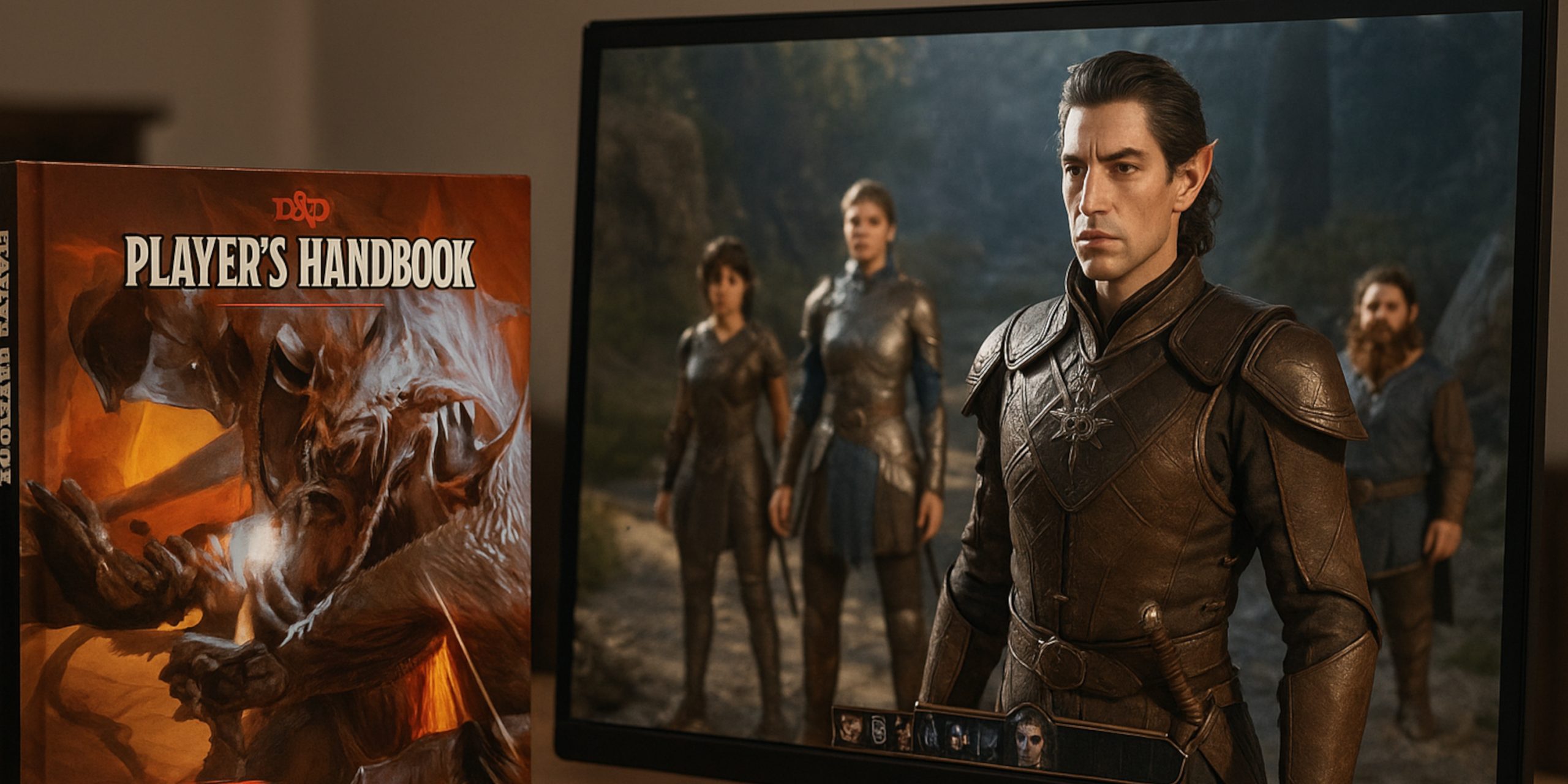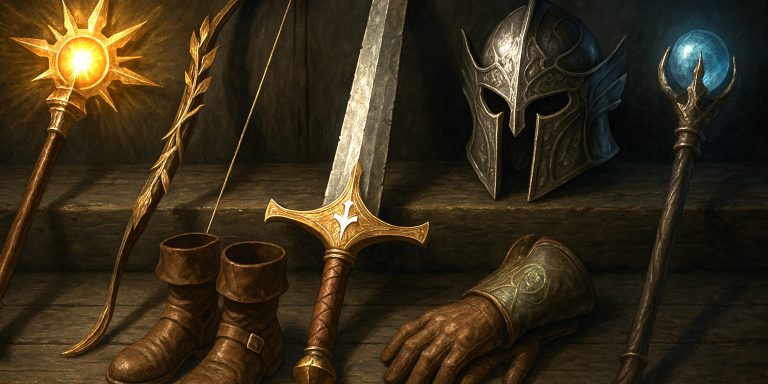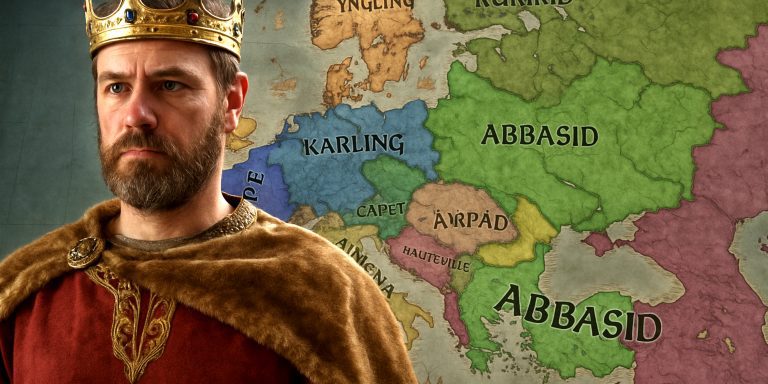
Baldur’s Gate 3 is heavily inspired by the rules and mechanics of Dungeons & Dragons 5th Edition, but it isn’t a direct digital translation. Larian Studios adapted the tabletop system for a turn-based RPG experience that works within the constraints and expectations of video game design. Below is a structured look at the key similarities and differences between BG3 and D&D 5e.
Core Rules and Mechanics
Turn-Based Combat
- BG3 uses strict turn-based combat, a departure from 5e’s flexible combat flow in tabletop sessions.
- Initiative is determined once at the start of combat rather than rolled individually in real-time like in 5e.
Actions, Bonus Actions, and Movement
- Action economy mirrors 5e with standard actions, bonus actions, and movement.
- Some abilities have been reclassified. For example, certain class features or spells that are bonus actions in 5e may act differently to maintain gameplay balance.
Ability Scores and Skills
- BG3 uses the standard 5e ability scores and modifiers.
- Skill checks are automatically rolled in context (e.g. Perception checks during exploration), which removes the player’s choice of when to actively roll.
Character Creation and Progression
Races and Subraces
- Most standard 5e races are included, though some options are limited or modified for narrative and technical reasons.
- Subraces are available with their distinct traits intact, though certain customisation options (e.g. mixed heritage) are absent.
Classes and Subclasses
- All core classes are present, along with several subclasses from official 5e content.
- Some class mechanics have been slightly simplified or automated. For example, Warlock spell slots regenerate on a short rest automatically without needing manual tracking.
Feats and Level Progression
- Feats are included but fewer in number. Some feats are slightly altered for balance in a digital environment.
- Level cap in BG3 is 12, compared to 20 in standard 5e. This truncation affects late-game class features and multiclass combinations.
Spells and Magic
Spellcasting System
- Spell slots, prepared spells, concentration, and ritual casting all feature prominently.
- Some spells are altered or omitted due to limitations in implementation or lack of utility in a video game setting.
Counterspell and Reactions
- Reactions exist but in a streamlined form. Players do not receive live prompts for every possible reaction moment as in tabletop play.
- Counterspell, Shield, and similar options use a predictive system or automation, limiting tactical depth.
Metamagic and Magical Items
- Sorcerer Metamagic is faithfully translated but with UI constraints.
- Magical items often grant unique abilities not found in 5e or alter mechanics in a way that diverges from official D&D rulesets.
Exploration and Dialogue
Skill Checks and Dialogue Choices
- BG3 rolls visible dice for many social interactions, creating transparency for persuasion, deception, and intimidation attempts.
- Skill checks are tied into branching narrative outcomes. This departs from 5e’s more flexible DM-driven improvisation.
Rest System
- Short and long rests are present but altered. Long rests can be triggered frequently by returning to camp, making resource management less critical than in 5e.
- Spell slots and class features are therefore more readily replenished than in a traditional campaign.
Gameplay Balance and House Rules
Party Composition
- Four-character parties in BG3 differ from the traditional six-character tables often seen in D&D. This affects encounter difficulty and tactical options.
- Certain encounters or enemies are clearly balanced around specific party compositions or prebuilt companions.
Homebrew and Adjustments
- BG3 includes many ‘house rules’ to smooth out the experience. For example, jumping is more generous, potions can be thrown as a bonus action, and certain surfaces like fire or grease play a more tactical role than they usually do in 5e.
- Encumbrance, line-of-sight, and stealth mechanics are also adjusted for game balance and usability.
Narrative and Roleplay
Player Agency
- While BG3 allows for rich narrative choices, it lacks the complete freedom a Dungeon Master provides in a tabletop game.
- Dialogue options are limited to scripted branches, though the game does a strong job of making them feel meaningful.
Alignment System
- BG3 does not enforce an explicit alignment system. Choices are morally grey and character-driven, in contrast to the more rigid structure used in many 5e campaigns.
Multiplayer
- The multiplayer experience echoes a co-op D&D game, but player actions are tied to the host’s campaign. There is no true co-DM functionality.
The Seven Swords Takeaway
Baldur’s Gate 3 remains one of the most faithful adaptations of Dungeons & Dragons 5e to date, but it is not a perfect mirror. What works at a tabletop with a human DM and boundless imagination doesn’t always work in a digital environment. Larian has made smart choices to ensure gameplay remains fluid, immersive, and satisfying. Some systems have been streamlined, others expanded, and a few altered entirely. For most players, the result still captures the essence of D&D, character-driven adventure, tactical combat, and meaningful choices, within a tightly controlled and beautifully crafted world.



